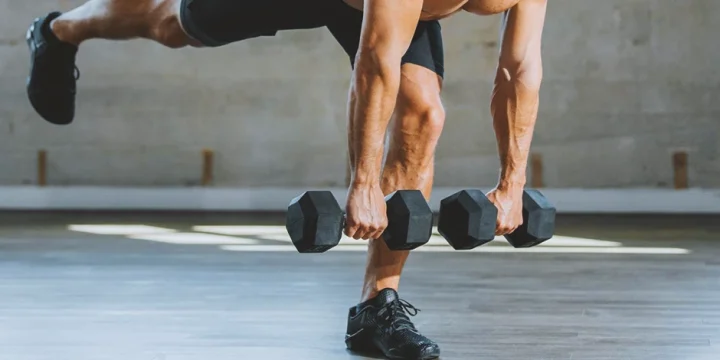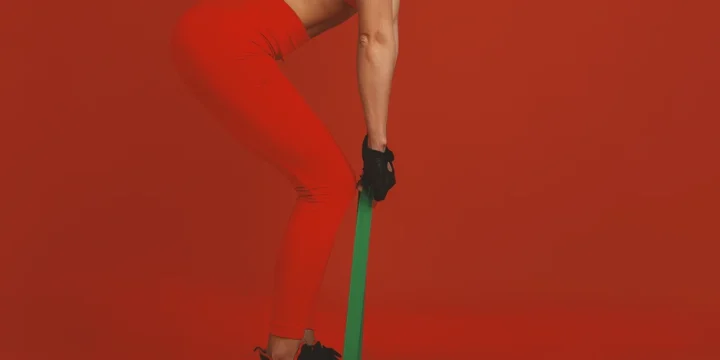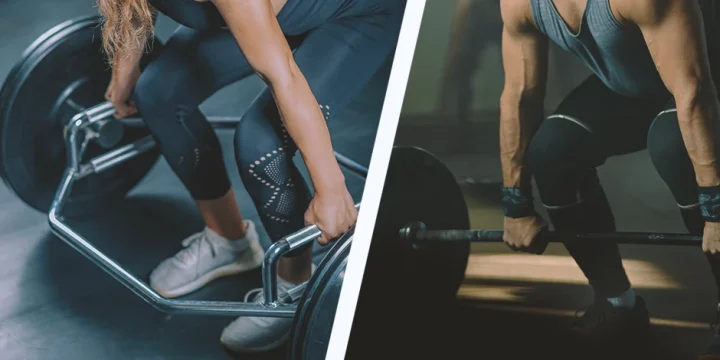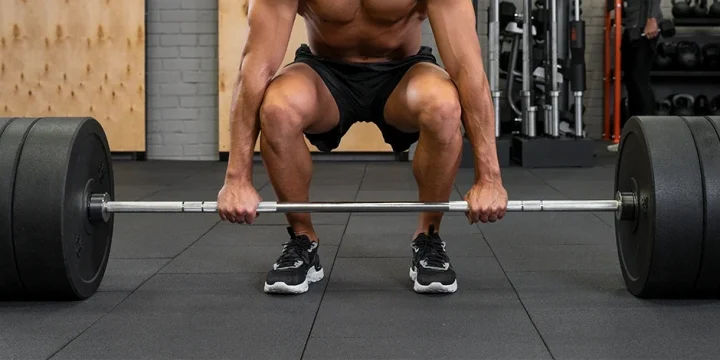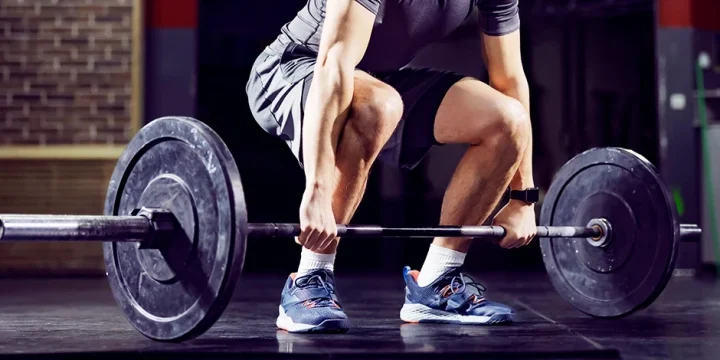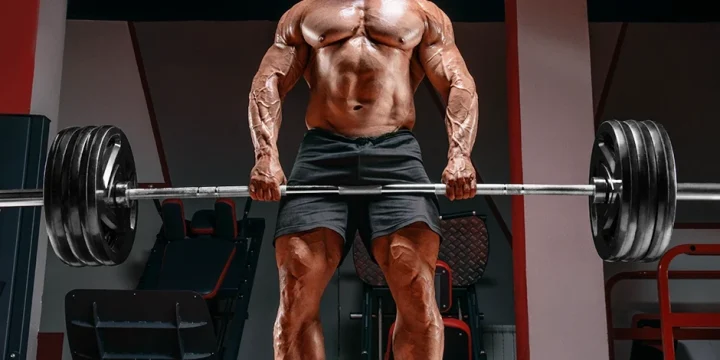Deadlifts are a great exercise for working out the whole body.
A solid deadlift begins with sturdy feet and an ideal deadlift stance.
As a certified fitness trainer with over eight years of experience, I've used different stances when performing deadlifts and coaching my clients.
Some are easy to perform, and some are challenging, targeting even more muscles.
In this article, I will provide my experiences with deadlift stances, how to choose the best deadlift stance, common mistakes, and the benefits of performing the deadlifts.
Quick Summary
- The deadlift stances include the conventional deadlift stance, the deficit deadlift stance, the sumo deadlift stance, and the squat stance deadlift.
- Deadlift stance can significantly affect your workout performance, safety, comfort, and results. Choosing the correct stance for your fitness level and body type is critical for getting the maximum benefit from your deadlift.
- The deficit deadlift is a version of the traditional deadlift that involves standing on an elevated platform, typically 2-4 inches high, to improve the exercise's range of motion.
- In my professional view, mastering the correct deadlift stance is a game-changer for maximizing workout efficiency and reducing injury risk.
The Deadlift Stances

Conventional Deadlift Stance
The conventional deadlift stance, a fundamental yet widely used variation, is integral to many workout routines. Despite its simplicity, mastering it safely and effectively requires practice.
For this stance, position your feet shoulder-width apart. Athletes might adjust this slightly wider or narrower, tailored to their body shape and size.
Point your feet forward with a slight outward tilt of 10–15 degrees, adaptable to foot size and comfort.
This stance targets leg and posterior chain muscles, including the lower back, glutes, and hamstrings. Initially, you'll feel tension in the glutes and hamstrings as you lift.
As the barbell crosses your knees and your upper body elevates, the focus shifts to your core and lower back.
In my experience as a personal trainer, clients often notice this shift in muscle engagement, which is crucial for effective training.
Deficit Deadlift Stance
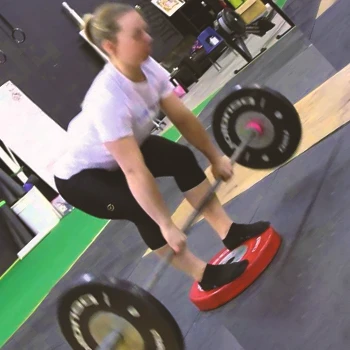
The deficit deadlift, a traditional deadlift variation, involves standing on a 2-4-inch elevated platform to increase the exercise's range of motion.
This elevation demands more effort, engaging additional muscle fibers in the feet and back, thus making the movement more challenging.
This variant notably boosts lower-body power and muscle activation, especially in the hamstrings, erector spinae, and glutes.
It's also gaining recognition in rehabilitation for strengthening post-injury muscles and enhancing joint mobility, particularly in the hips, ankles, and knees.
Sumo Deadlift Stance
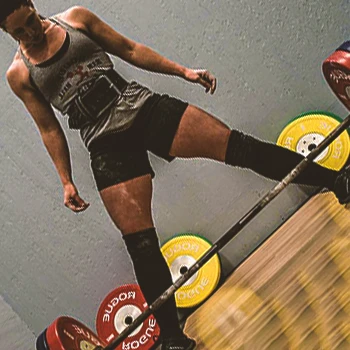
Stand with feet shoulder-width or wider, toes out at 45 degrees.
This stance, requiring more hip and ankle mobility, targets the glutes, lower back, hamstrings, adductors, and quadriceps. It's beneficial for older adults, supporting muscle and joint health.
While reducing back strain, it intensifies the load on the knees and hips, making it ideal for lower body strengthening.
In my experience training clients, they often feel initial tightness in the adductors and quadriceps, shifting to the glutes, lower back, and hamstrings as the lift progresses.
During the lockout, the weight distribution should feel balanced throughout the body, akin to a traditional deadlift
Related: Sumo vs Conventional Deadlift
Squat Stance Deadlift
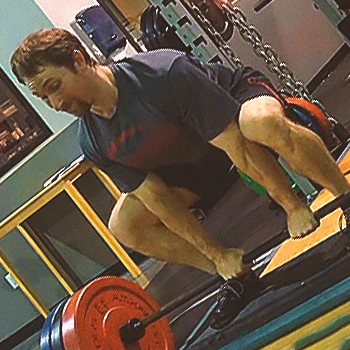
The squat stance deadlift, a lesser-known variant supported in coaching and physiotherapy, involves a deadlift from a squat position with feet shoulder-width apart and toes slightly outward.
The overall posture is quite similar to the sumo stance, including the workout's range of motion and effect on the body.
The squat stance deadlift, however, needs more mobility in the ankles, hips, and knees due to the forward-pointing toes, increasing the total risk of injury in these regions.
Athletes in sports like basketball and soccer may find this stance particularly beneficial, as it mimics the dynamic lower body movements common in these sports.
That said, it's worth noting because anatomy differs from individual to individual, so it could be worth experimenting to see if it functions better for you than a standard sumo stance.
Related Articles:
How To Choose the Optimal Deadlift Stance

How Your Arms Hang Near to Your Shins
Hip Position or Back Posture in Relation to Deadlift Stance Width
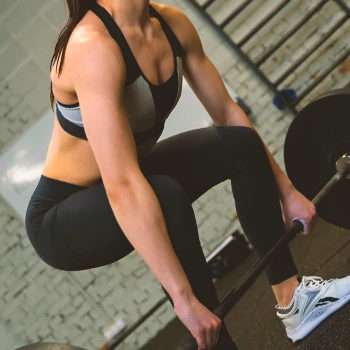
Ensure your deadlift stance allows for a neutral hip alignment and a flat lower back. A stance that is too narrow limits hip mobility, often causing lower back arching.
Ideally, keep your hips elevated yet close to the bar. This balance engages the quadriceps, glutes, and hamstrings effectively during the lift.
From my experience as a health and performance coach, a stance that facilitates proper hip folding reduces the likelihood of back arching.
Shoulder Posture in Relation to Stance Width
In a proper deadlift position, our armpits should be squarely above the barbell, and our shoulders should be slightly before the barbell.
If your deadlift posture makes it difficult to keep your shoulders slightly before the barbell at the starting position, it might affect how the barbell moves during the action.
From start to finish, you want the barbell to go in a straight (vertical) line.
Common Mistakes

The following are the two most frequent deadlift stance mistakes:
- Standing too narrow: You should stand as narrowly as possible to ensure that the deadlift is completed with the least range of motion feasible, but there is a limit. You should never stand more than hip-width apart. Standing too narrowly might result in poor form and posture, particularly a rounded lower back.
- Standing too wide: If your stance is too wide, you must adjust the arms out, causing your shoulders to begin lower and nearer to the bar. This indicates your torso tilts forward more, causing you to hinge further through your hips. As a result, you have to go through a greater range of motion. You work more with the posterior chain muscles, including your low back, glutes, lats, and hamstrings.
Benefits of the Deadlift

You'll Target Many Muscles Simultaneously
In deadlifts, the leg muscles are the major movers, but the core, back, and upper body are all used to stabilize the weight, making the action a particularly effective full-body workout.
You'll Increase Your Power
Deadlifts are linked to increased power and jumping ability. They can increase vertical jump efficiency, which is a power output metric.
Deadlifting may improve both the knee flexors and extensors' "rapid torque characteristics" or their ability to flex powerfully, as per studies published by Research Gate [1].
You'll Improve Lower Body Strength
When a deadlift is done correctly, you will feel a significant burn in the muscle groups being worked.
This is because they emphasize the hamstrings and glutes, two of the biggest muscles in the body, according to studies in the National Library of Medicine [2]. Strength gains will occur from regular glute and hamstring exercises.
As for how rapidly improvements in power come with exercising, that depends.
"Initial strength increases from lifting in the first few weeks are mainly due to neurological adaptation - you become more efficient and may fire your muscles quicker."
- Jason Machowsky, Certified Strength & Conditioning Specialist
You'll Improve Your Back and Core Strength
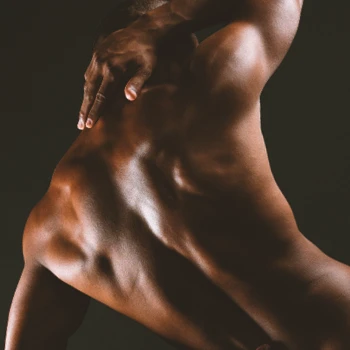
Deadlifts will strengthen your back and core. A more robust back equals a stronger back.
As previously stated, the action is a posterior-chain workout, which means it works the muscles at the back of the body.
Studies published by Sports Medicine Open have linked frequent posterior-chain exercise to decreased back discomfort and can improve overall posture [3].
You'll Increase Muscle Mass
While resistance exercise helps to increase muscle building in general, the ability to simultaneously exert immense pressure on numerous muscles in a deadlift implies that muscle will likely build fast (assuming you exercise frequently and intensely).
"Significant muscular loading during a deadlift might stimulate the body to retain lean muscle mass."
- Daniel Bubnis, National Academy of Sports Medicine (NASM) Certified Personal Trainer
You'll Maintain Bone Density
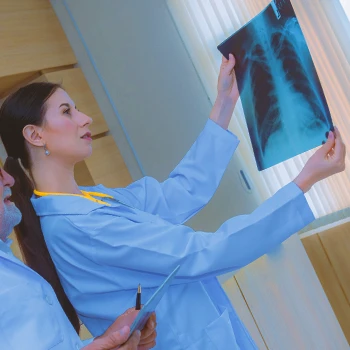
Bone mineral density measures the strength of your bones, as shown by studies published by Endocrinology and Metabolism[4]. The lower the bone mineral density, the greater your chance of injury.
The deadlift is very effective for increasing bone density.
Due to the bone's “muscle-induced mechanical stress,” deadlifts may assist in preserving bone density.
In short, the deadlift muscles pull on the bones they are moving, stimulating their development.
FAQs
Is Wide Stance Deadlift Easier?
Yes, a wide-stance deadlift is easier. The main reason people adopt a wide stance is mobility. It simplifies getting down to the bar, particularly if you are taller or have reasonably long legs.
What Are the 3 Different Deadlift Variations?
The three different deadlift variations are Romanian, conventional, and sumo deadlift.
What Type of Deadlift Is Hardest?
The type of deadlift that is hardest is the deficit deadlift. Deficit deadlifts are more difficult than conventional and many other variants because they need more back muscles, time under tension, and hip mobility.
References:
- https://www.researchgate.net/publication/265692141_
- https://pubmed.ncbi.nlm.nih.gov/25671354/
- https://www.ncbi.nlm.nih.gov/pmc/articles/PMC7940464/
- https://www.ncbi.nlm.nih.gov/pmc/articles/PMC6279907/
About The Author
You May Also Like
